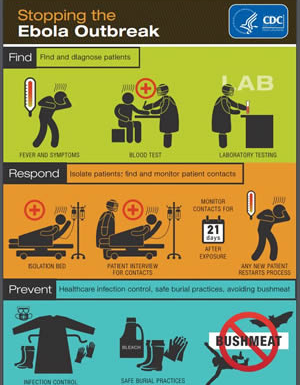Infectious Disease Project
When health care organizations need to get information to the public, they use a variety of media to highlight what the public should know about a disease. Posters might be placed in doctor's offices, airports and train stations. Pamphlets might be distributed as schools, and memes and graphics might be shared over social media.
Examples:

Assignment (Choose One)
1. Create an infographic using piktochart.com .
2. Create a poster using postermywall.com
3. Create a pamphlet using Word (template)
Your project should inform the public about the disease as if there were a pandemic, with the goal of reducing the spread of the disease and increasing the likelihood of survival. See rubric for specific information that should be included. You will upload your project (or link to your project) using Google Classroom. In addition, you will review and grade two other projects and provide meaningful feedback.
*If you are doing a “historic” disease, you may choose to present your information as if it were that time period.
Assignment Due Date: __________ Feedback Due Date ________
Grading
| Outstanding (3 pts) | Satisfactory (2 pts) | Needs Work (1 pt) | |
| General Content | Provides an overview of the pathogen and the disease it causes, reader understands main points at a glance; well organized | Provides an overview of the pathogen and the disease it causes, main points are not clear or there are minor issues with organization | Includes general information about the pathogen or the disease, main points not clear or well organized |
| Pathogen | Details on the type of pathogen (bacteria, virus, etc) that causes the disease are included with images | type of pathogen that causes the disease are included with images | lacking details on the type of pathogen |
| Transmission | Provides details on the routes of transmission and how infectious it is (R0); includes how to avoid becoming infected; vaccine or other medical preventatives addressed. | Provides details on the routes of infection, includes how to avoid becoming infected | Route of infection is mentioned, though lacking in details |
| Symptoms | Details about symptoms of the disease are specific and comprehensive, images included if appropriate | Some details about symptoms are included, images included if appropriate | A few details about symptoms are included, details lacking |
| Treatment or Outcomes (mortality rate) | Provides treatment options, information about need for hospitalization, or gives a time frame for recovery and mortality rates. | Provides treatment options and information about outcomes | Some details are included about how to treat the disease or mortality rates |
| Global Incidence | Statistics, maps, and other information included to provide scope and scale of the disease and how it affects global populations | Some information provided about scale and overall incidence of the disease | Lacking information about how the disease affects the global community |
| Overall creativity, organization and flow | Makes excellent use of font, color, graphics, effects, etc. to enhance the presentation, organization makes information easy to read | Makes good use of font, color, graphics, effects, etc. to enhance presentation, organization good | Makes use of graphics, effects, lacks organization and cohesiveness |
| Sources and Credits | Resources and citations included, high quality sources used, such as WHO, CDC. | Resources and citations included | Resources not included, or are questionable quality |
Infection Diseases List (Check with instructor if you want to do a disease not on the list)
- Leprosy (aka Hansen's Disease)
- Black Plague (aka Plague or Bubonic Plague)
- AIDS (HIV)
- Ebola
- Hepatitis
- Malaria
- Influenza (flu)
- Tetanus
- Measles
- Smallpox
- Rabies
- Diptheria
- Tuberculosis
- Polio
- Whooping Cough (pertussis)
- Anthrax
- West Nile Virus
- Meningitis
- Hantavirus
- Gonorrhea
- Listeria
- Rubella
- Chikungunya
- Rubella
- Chlamydia
- Norovirus
- Mono (Epstein-barr virus)
- Cholera
- Mumps
Other Resources on Infectious Diseases
Infectious Disease Sorting Activity
Case Study: John Snow and the Origin of Epidemiology

